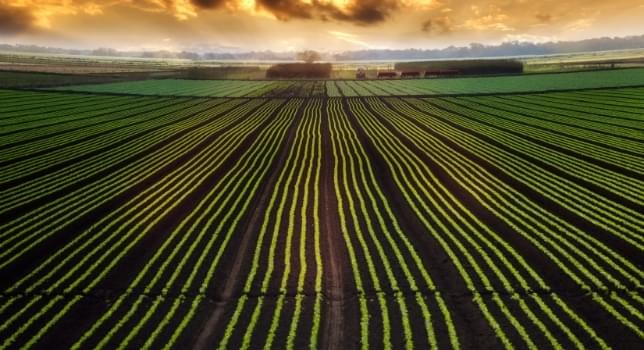Standardized testing has been in place for approximately 30 years to evaluate persistence, generally in a tiered approach, through the use of Ready Biodegradation Testing, Inherent Biodegradation Testing, and Simulation Testing. In the realm of
environmental risk assessment for chemicals, including
biocides,
pesticides,
pharmaceuticals, and
industrial compounds, the conclusion of persistence after evaluating biodegradation potential can be the end of a product line or at least reduced market attractiveness. Often times, by progressing through the different tiers of testing, a more favorable environmental risk assessment is achieved.
Ready Biodegradation Testing
There are several test designs that are outlined in the OECD Guidelines and fall under the 301 Series, along with the late-comer headspace OECD 310 guideline, as well as the OECD 306 guideline for marine applications. These guidelines screen for ‘ultimate biodegradation’ or the mineralization of the chemical to CO
2 by directly capturing and measuring CO
2 (301B, 301C, 301F, 310), by using a presumptive measurement of the decline of dissolved organic carbon (301A, 301E and 306 shake-flask method) or the decline of oxygen (301D and 306 closed-bottle method). Each of these test procedures has their strengths and application.
One of the most common test methods is the 301B which allows for the highest inoculum concentration, a relatively low test concentration for this testing series and measures CO
2 directly, which provides regulators definitive proof of ultimate biodegradation. The level of biodegradation must be 60% conversion to CO
2 during the 28-day test within a 10-day window for single component test substances. For many chemicals, this is a difficult level of biodegradation to achieve. If a chemical is water-soluble and exhibits no adsorptivity, the OECD 301A guideline may provide a better opportunity for meeting the criteria even though the pass level is higher at 70%. The 301A guideline measures the decline of dissolved organic carbon (DOC), so the compound only needs to be incorporated into the inoculum’s biomass rather than being fully metabolized to CO
2 in order to achieve Ready Biodegradability Status.
Several techniques can be used to increase a compound’s chances of reaching an acceptable pass level, especially in the OECD 301B test. For poorly soluble compounds, silica gel or other inert carriers can be used to increase the surface area and contact with the inoculum. Non-biodegradable, volatile solvents can also be used to deliver the compound to the test vessels while increasing surface area. Diversifying the inoculum with soil, sediment, or surface water, rather than relying solely on activated sludge, is also allowed under the OECD guideline, provided the total inoculum solid content remains at or below 30 mg/L solids. In some cases the diversification may provide “competent degraders” for the metabolism of the compound.
Even if a compound is found to be not ‘Readily Biodegradable’ it certainly is not the end-of-the-line. For instance, the amount of biodegradation attained in a ‘Ready Biodegradation’ test for general chemicals can be compared to an EPA model shown below. Based on the percent biodegradation, a half-life in a wastewater treatment facility can be assigned.
- Readily degradable chemicals: 1 hour (k = 0.69 hour-1);
- Chemicals attaining >40% degradation: 3 hours (k = 0.23 hour-1);
- Chemicals attaining >20 but <40% degradation: 10 hours (k = 0.069 hour-1).
Inherent Biodegradation Testing and Simulation Testing
For chemicals that do not pass the criteria for ready biodegradation, there are further testing options that follow a tiered approach, consisting of studies that assess inherent biodegradation (tier 2) and simulation testing (tier 3). The order of testing is summarized below.
| Tier |
Biodegradation Pass Level |
- OECD 301 Series (A-F; plus 306, 310)
|
≥60% CO2 evolution or ≥70% DOC decline with 28 days inside a 10-day window is ‘ready biodegradable’. |
- OECD 302 Series (A-D)
|
≥20% CO2 or DOC decline is evidence of primary-inherent biodegradation; ≥60% CO2 evolution or ≥70% DOC decline is evidence of ultimate-inherent biodegradation. |
- OECD 307, 308, 309 & 314B
|
≥70% CO2 evolution is evidence of “rapid degradability”; however, even small amounts of degradation confirmed by the formation of radiolabeled metabolites may permit degradation times to be calculated (e.g., DT50, DT90). |
The tier 2 tests consist of the OECD 302 Series which assess primary and ultimate inherent biodegradation. Primary biodegradation is the transformation of the parent compound, while ultimate biodegradation refers to the conversion of the compound to CO
2, water and other inert natural components. Inherent and simulation testing for chemicals entering a sewage treatment plant (STP) use inoculums with more concentrated activated sludge. Such tests are the OECD 302A and 302B and 302C tests, or the 314B sludge biodegradation test which is conducted with (and often used now to replace the OECD 303A and 303B activated sludge simulation tests). Where only primary degradation is observed, it is necessary to identify the degradation products and assess whether they possess properties that lead to persistence. For this reason the higher tier simulation studies (OECD 307, OECD 308, OECD 309 and OECD 314b) detailed in tier 3 should, where possible, be conducted using radiolabeled test compound.
Degradation simulation studies performed using a radiolabeled compound, in appropriate environmental media (water, soil, sediment, sewage sludge) and at environmentally realistic conditions, are the only tests that can provide a definitive degradation half-life that can be compared directly to defined persistence criteria. These tests allow both biotic and abiotic processes to operate. The simulation tests address the fate and behavior of a substance as it may be expected in the environment including information about partitioning within the test system, primary or complete (ultimate) degradation, adsorption behavior and route of degradation (including formation of degradation products). The endpoints addressed in these studies include the primary and ultimate degradation rate and degradation half-lives (DegT50) or dissipation half-lives (DT50) for the compartments included in the test system as well as the route of degradation, information on degradation products and
non-extractable residues (NER). In addition, a mass balance is included in these tests so any possible losses (volatile degradation products) from the test system can be quantified.
Persistence criteria (as described in Annex XIII in REACH) are shown in the table below along with the related simulation test required to provide information:
| Environmental Media |
Degradation half-life for P criteria |
vP criteria |
Simulation test |
Water
Fresh and marine |
Fresh water > 40 d
Marine water >60 d |
Fresh or marine water > 60 d |
OECD 309 – aerobic mineralization in surface water |
Sediment
Fresh and marine |
Fresh water sediment >120 d
Marine sediment > 180 d |
Fresh or marine water sediment > 180 d |
OECD 308 – aerobic and anaerobic transformation in aquatic sediment |
| Soil |
Soil > 120 d |
Soil >180 d |
OECD 307 – aerobic and anaerobic transformation in soil |
Note that degradation half-lives should be determined at environmentally relevant conditions (12°C for REACH; 20°C for plant protection products).
US EPA’s persistent criteria for water, soil, sediment is
>60 days and vP is >180 days at 20
oC.
If a chemical falls into one of these categories for persistence, don’t forget about photolysis testing or a combination of testing that allows light and biodegradation to occur during the same study which may be acceptable in certain circumstances when submitting data to EPA.
In order to select the appropriate test type, careful consideration of the compound structure, physico-chemical properties and the potential environmental behavior is required. Smithers has a long history of conducting standardized
Environmental Fate studies, for the registration of test substances. Our experts have developed specialized test designs to simulate different environmental conditions that may provide the best opportunity to assess a chemical’s true biodegradation rate with the goal of creating the most accurate laboratory test environment to reflect the real-life scenario.
Interested in learning more? Contact our experts:
.jpg?ext=.jpg)


.jpg?ext=.jpg)


.jpg?ext=.jpg)